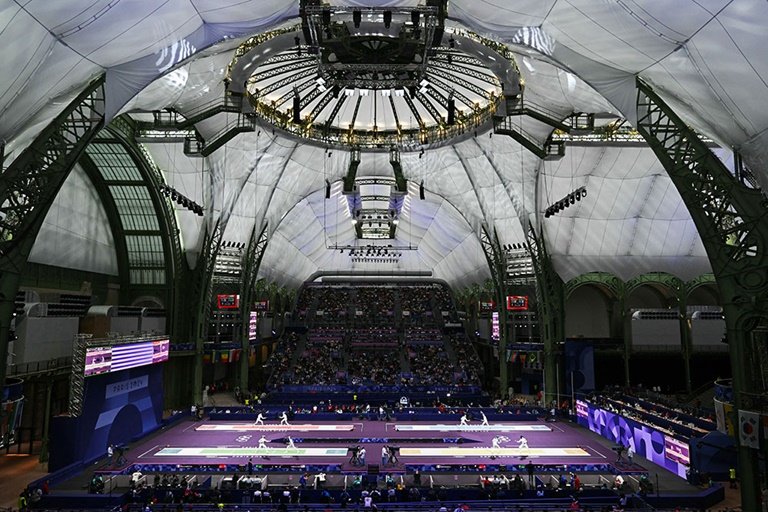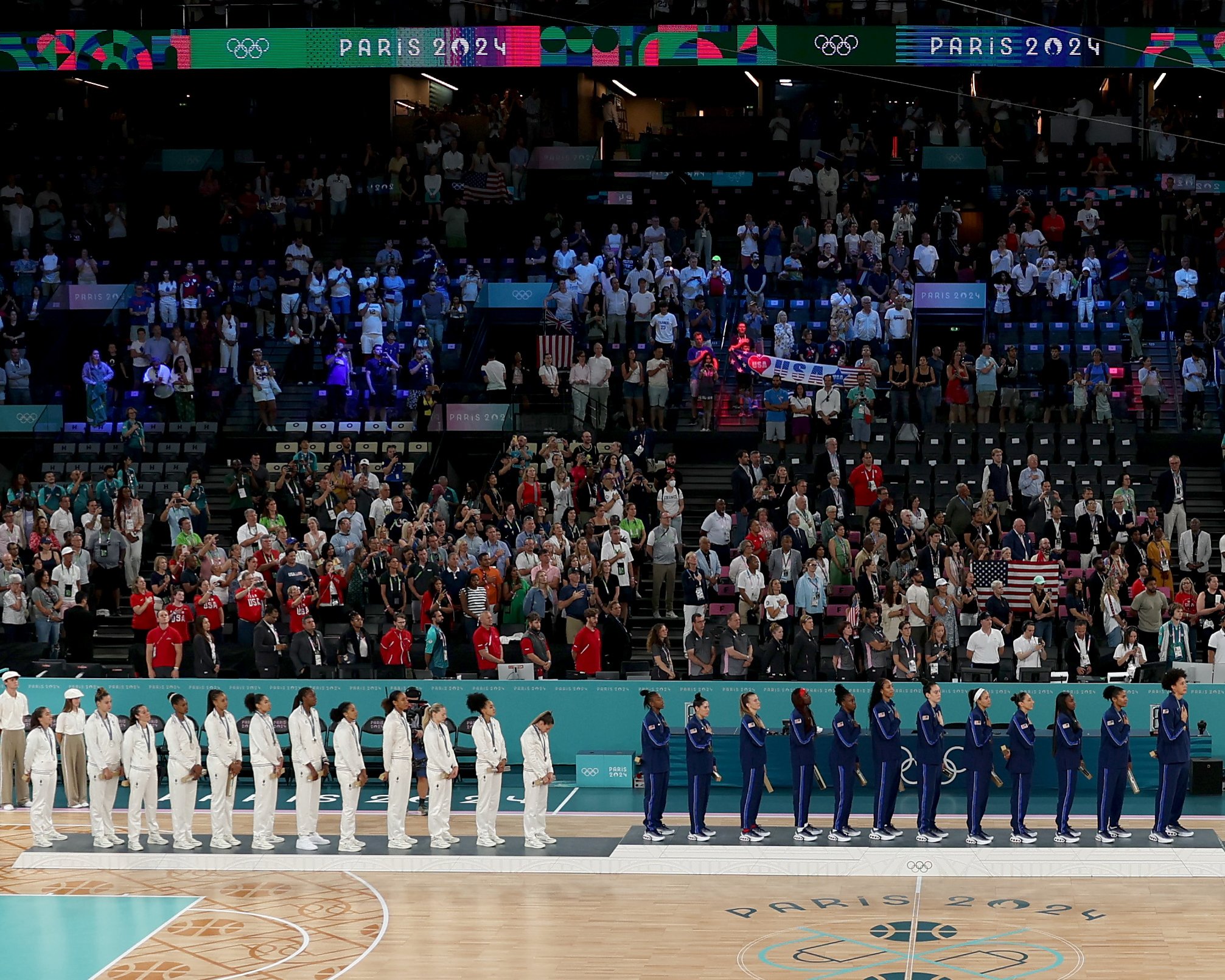Athletes as Influencers: Post-Olympic Strategy
Sports are Tough
Putting one’s body through such intense physical demands is hard work, especially if they’re in the starting lineup where top players are only given 6–10 minutes of rest on average, which requires immense mental toughness just to make it through.
As a result, there's an "MVP" in every game, awarded to the player who makes the biggest impact. However, there are also standout players in public opinion—meant to be driven by performance. But with misunderstandings flying around about what it takes to play at a high level, the proliferation of social media and the fast-paced nature of communicating online (posting, creating, commenting, replying)—that’s just not the case. It doesn’t always turn out to be positive either; when user @momoneybuckets [alias for this article] focuses on one or a few key moments and shares their comments, suddenly turning that athlete into a meme, it can go either way. On a good day, this boosts brand positioning and influence; on a bad day, it leads to scrutiny, unsolicited commentary, and abuse.
So, what’s one sports competition that makes having an online presence worth it for these athletes? The Olympic Games. And I’ll dig into why in this article.
Social Media and Sports Influence
I have lived through three Olympic Games as a Marketing Consultant and have seen the progress made and how the tides have shifted. Walk with me.
In 2012, during the Olympic Games in London, TikTok—the popular social media platform that keeps us glued to our phones for hours—didn’t exist. Instagram was primarily known as a photo-sharing app, with no “Reels”, formerly known as “IGTV”. And people were addicted to long-form content on YouTube. But with updates being made to these social media platforms, and human/user behaviour evolving, so did influence marketing.
One thing we know for certain is the impact social media has had a significant impact on personal branding.
Fast forward to 2021, during the 2020 Olympic Games in Tokyo, Japan, athletes had to maintain social distancing whilst audience participation was almost nonexistent.
Media was a completely different landscape compared to today. Out-of-home (OOH) campaigns, blogs, and YouTube were the mainstays of marketing, and the term “Influencers” was just one of many titles alongside “Blogger,” “YouTuber,” and “Content Creator.”
Still in its infancy, Marketers—whether brand side, freelance or at agencies—were beginning to realize how social media users were forming parasocial relationships with Content Creators, who in turn built trust with their followers with every post, shaping opinions and motivating purchase decisions. Something I predicted would happen in my TEDx talk, ‘Social in Mind,’ where I discussed how social media would change lives and impact careers. Since then, I’ve begun managing Public Figures and influencers, working on Influencer Marketing campaigns and now with Influencer Marketing software company Kolsquare. Due to being in the field, I am constantly armed with insights and practical and effective ways to work in this sector. So when the Olympics kicked off, I made sure to pay attention to Sports from a unique angle: Are Athletes becoming Influencers?
In true witty fashion, just before the #Paris2024 Olympics kicked off, Rihanna announced on Twitter/X that Fenty Beauty was the premium partner for the Games. Given the relationship between makeup, skincare, and women in sports, and understanding the considerable impact Rihanna has had on the beauty industry through her partnership with LVMH and on culture, this felt like a no-brainer to me. So, I was excited to see how this partnership would unfold organically.
On Tuesday, July 30th, the most decorated U.S. Olympic gymnast in history, Simone Biles (who has won 7 Gold, 1 Silver, and 2 Bronze medals), was spotted reapplying her lip liner using the Invisimatte Instant Setting + Blotting Powder mirror. A moment that quickly took over social media timelines—another chapter in Fenty’s story, adding to the myriad of cultural moments they've sparked. Also an indication of how athletes are evolving, especially during the 2024 Olympic Games when social media engagement is at its peak. If you’re interested in learning more about Fenty’s impact in the beauty sector and Rihanna’s legacy, tap here.
Athletes as Influencers
My work with Kolsquare allows me to dive into the data behind these athletes' success. In gymnastics, I created this post for the Influencer Marketing Software company, taking a deeper look into athletes as influencers by the numbers. Here’s what the data found during the Olympic period:
🇺🇸 Simone Biles 🤸🏿
🌟 Total Subscribers: 12.16M
🌟 Growth this period: +4.89M (+49.24%)
🌟 Content Published: 183
🌟 Total Engagement: 40.93M
🇧🇷 Rebeca Andrade 🤸🏽♂️
🌟 Total Subscribers: 10.71M
🌟 Growth this period: +8.02M (+74.86%)
🌟 Content Published: 54
🌟 Total Engagement: 20.82M
🇺🇸 Sunisa Lee 🤸🏼♀️
🌟 Total Subscribers: 3.1M
🌟 Growth this period: +1.43M (+46.26%)
🌟 Content Published: 103
🌟 Total Engagement: 8.56M
The data shows how Simone Biles came out the gate swinging with a community that has supported her for over a decade. With the launch of her latest two-part series on Netflix, which introduced different facets of gymnastics, it’s no surprise that she entered the Games with 7.3 million global followers, and left with an additional 4.94 million. It looks like she’s not stopping there; another 1 million followers have since joined the GOAT’s community on Instagram 🐐.
Data pulled from Kolsquare
But the picture below tells US more about who truly stole the show: Rebecca Andrade, the Brazilian gymnast.
There’s always something special about the ones we don’t expect, but it means even more when the GOAT ‘Simone Biles”, says things like... “I don't wanna compete with Rebeca anymore. I'm tired — like, she's way too close. I've never had an athlete that close, so it definitely put me on my toes and it brought out the best athlete in myself. So I'm excited and proud to compete with her, but I don't like it no more. I’m getting uncomfortable guys, I don’t like that feeling I was stressing. On each event we’re very similar in scores.” (Video) — This proves that there’s a new era of Athletes emerging. While the greats were competing, a new set of Athletes have been training and like Simone said, coming up close. And the data shows that.
How Sports Pairs with Lifestyle
Sunisa Lee is building a brand of strength through her groundbreaking story and moves on the vault, uneven bars, beam and floor exercises. As an athlete, your skillset will always be the foundation of success and the reason people start falling in love with you. However, it’s the intersection of different parts of your brand that keeps them around. Sunisa Lee incorporates GRWM (Get Ready With Me) content with her Sports-related uploads, sitting at 15.2M followers at the time of this article, which exceeds what most would have anticipated for lifestyle influencers invited to the Games. Simone Biles is taking us on tour and sharing BTS of the Olympics and Rebeca is hitting the covers and showing people behind-the-scenes of her hard work whilst dabbling into fashion through public appearances.
I can’t continue without shining a spotlight on how culture, style, and fashion were showcased during the Olympics—and how their pre-Olympics style made an impact both during and after the Games.
Style and accessories have always been a means of expression, reflecting our personality, tastes, and cultural background. They’re the little details that can completely transform an outfit, giving it character and individuality. While clothes set the stage, it’s the accessories that make a look truly personal, adding those final touches that bring an outfit to life and let your style shine. My relationship with jewelry began at Astrid & Miyu during my first social media internship in 2013, which had facets of (influencer) marketing. I worked closely with the Chief Marketing Officer, and at that time, influencer marketing was referred to as "seeding." This involved finding bloggers who spoke about jewellery, sending them gifts, and hoping for a positive review. This experience began my relationship with jewellery as a means of self-expression. By styling themselves out, these athletes brought attention to their unique looks in a different way and cemented themselves in the minds of viewers, not just by looking sensational but also by representing their country.
Athletes are Influencers
German athlete Leo Neugebauer took us behind the scenes, intentionally sharing what everyone has probably been dying to see while building his brand. His content generated more traction than that of the influencers who worked for and were hired by NBC. “In an attempt to lure in younger viewers, NBCUniversal sent dozens of social media influencers to the 2024 Paris Olympics. But the Athletes and Entertainers were the ones who went viral.” - WIRED. This proves that we’re in a new era, where Gen Z are the new adults and Athletes are becoming the “new champions of influence.”
Love and Basketball
If you’re familiar with the heading of this section, you know it references the movie Love & Basketball. It must have sparked my love for both basketball and storytelling, featuring the illustrious Sanaa Lathan and directed by Gina Prince-Bythewood. The film captures the essence of basketball and the journey to the WNBA, particularly with the Los Angeles Sparks. And this movie is where much of our interest in Women’s Sports was built.
In the movie, Sanaa Lathan’s character Monica Wright goes to Spain to play international basketball before she is drafted to the WNBA: LA Sparks (who are a real team by the way) This commonly happened and still does occasionally because of the experience and pay gap between the leagues.
An although my love for Sports began when I played Netball in secondary school, in 2012, it became way more intentional and I’ve been dedicated to watching and taking notes on developments in the sports industry since then. Women’s sports, in particular, have seen tremendous growth over the last decade, and the #Paris2024 Olympics are a testament to how crucial social media has been in bringing real-time interactions across the globe together, allowing us to celebrate the achievements of these athletes who train year-round.
So, it was no surprise to me that the French Women’s team won the quarter-final matchup at The Olympics in Paris against Belgium to face The United States, similar to the Men’s. Belgium fought hard, pushing the game into overtime and keeping viewers on the edge of their seats, but spotlighted another set of Athletes who through their skills introduced themselves to a new set of fans, highlighting exactly what these games are for. To set them up for future success.
France, the 2024 host country, has seen the most consistent number of athletes make it to the WNBA (Women's National Basketball Association) and NBA (National Basketball Association) than any other teams (outside of The USA teams who are all pulled from the NBA because of their high-level and competing skill) in the world at the Olympics.
As someone who has attended games here in Paris, whether it's Paris vs. the local team Metropolitan 92 or South Carolina Women’s Basketball doing a special, selling seats is not that much of a challenge—both for men and women. There’s a strong love for the sport in France, and there's an audience for it— a sector just getting started.
Want to see more of my sports insights? Follow me on Twitter, especially during sports tournaments. Just recently, I shared a thread on the latest era of Athletes, focusing on Tennis: The US Open, where many underdogs were seen beating the veterans of the game. Was it Olympic fatigue or pure skill? Let me know your thoughts over there 😉
Now that we’ve entered a new era, the same old formulas and strategies for Athlete brand building need to be reviewed. Marketers who love and understand the sport and its history are ready to innovate in this space. Are you?














